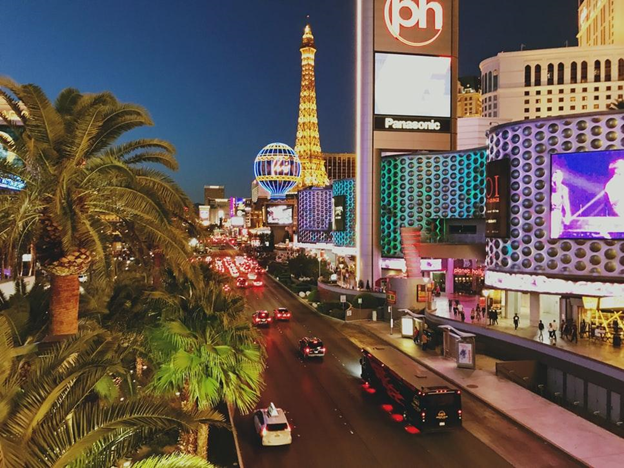
by Contributing Author
Benjamin “Bugsy” Siegel was one of the most feared, vicious, ruthless, and infamous gangsters of his time. Born to Russian Jewish immigrants on February 28, 1906, in Brooklyn, New York, Siegel disliked and swore to rise above the poorness surrounding him.
Will you offer us a hand? Every gift, regardless of size, fuels our future.
Your critical contribution enables us to maintain our independence from shareholders or wealthy owners, allowing us to keep up reporting without bias. It means we can continue to make Jewish Business News available to everyone.
You can support us for as little as $1 via PayPal at office@jewishbusinessnews.com.
Thank you.
He coveted power, fame, and wealth, and by the age of 14, Benjamin had already established his gang. Although he was primarily remembered as a gangster, Seigel was often credited for the vision to build a casino in Las Vegas in the first place.
It was Benjamin Siegel who first envisioned building the town into a drinking hangout and high-stakes gambling.
The Flamingo Hotel
On December 26, 1946, Benjamin Siegel and business partner Billy Wilkerson opened the gaudy Flamingo Hotel. Benjamin was a regular at Wilkerson’s nightclub in Los Angeles, and the two had been friends since the mid-1930s.
Siegel loved the Flamingo project and joined Wilkerson in overseeing the rest of the construction. He put a whopping amount of effort, money, and time into building and designing the hotel, which would be the first of its kind in Las Vegas.
Bugsy Siegel wanted to indulge the people’s vices with the best and most prominent entertainment and liquor money they could find. The problem was that he used violence than business, positioning his ambitions and visions up for failure.
Siegel had put a lot of faith in his great business, and the budget went overboard. In turn, he oversold shares of his business venture to almost anyone who’d purchase them. In essence, Bugsy sold shares that did not even exist, which was outright illegal.
Regardless of all the problems the business faced, the Flamingo Hotel still opened in 1946. Since the hotel was still unfinished when it opened, it closed over one month after the opening. In March of 1947, the hotel reopened and, this time, able to make money.
Unfortunately, Benjamin Siegel never lived to watch his business continue to grow and prosper. An unknown mugger killed him in Beverly Hills. The case was never solved, and no one was ever convicted for the assassination.
Benjamin’s legacy lives on with the hotel, even though the original building was replaced and pulled down in 1993. What’s more, even if he did not bring Las Vegas into the world, Siegel undoubtedly was the inspiration behind Las Vegas’ nickname, which is sin city.
The hotel is now known as the Flamingo Las Vegas, surviving a series of ownership and name changes.
Bugsy’s Vision
Casinos in Las Vegas existed before Siegel came along. Regardless, Benjamin “Bugsy” Siegel’s arrival firmly put Las Vegas on the map. He saw the place where dreams could become a reality, financially speaking.
Bugsy’s vision materialized as the Flamingo Hotel and Casino, a business project he inherited from Wilkerson. It took several months for the hotel to generate income. Since then, the connection between organized crime and Las Vegas had been set.
The Growth Of The Las Vegas Strip
Benjamin Siegel was one of the hotel builders in the late 1940s. Even though he was killed in 1947, fellow gangsters helped fulfill and accomplish his vision for Las Vegas. Bugsy’s vision was for Las Vegas to be a premier gambling city.
During the 1950s and 1960s, the Sahara, the Sands, the New Frontier, and the Riviera opened. These casinos were mostly financed by drug trafficking and racketeering money. Later on, many mobsters took investments from esteemed groups like the Mormon Church and Wall Street banks.
Due to the booming and flourishing casino scene, tourists flocked to Las Vegas. Some of them just to see celebrities like Elvis Presley and Frank Sinatra perform.
The End Of An Era
Howard Hughes, a businessman and a billionaire was staying at the Desert Inn in 1966. He decided not to leave and chose to acquire the hotel instead. Hughes purchased at least a dozen hotels, gradually eliminating mobster-owned casinos and hotels that ruled over the city.
In the 1980s, mobster-owned casinos had disappeared. By 1989, Steve Wynn introduced a new, fresh trend in hotel construction and design. He opened the first glitzy resort hotel called the Mirage in Las Vegas.
Over the years, the Strip witnessed many developments derived from iconic cities like Rome, Paris, and New York. In 1994, Las Vegas had over 86,000 motel rooms and hotels.
Final Thoughts
Casinos and entertainment remain the leading sources of income in Las Vegas. After many renovations, new restaurants, refurbished golf courses, and high-profile venues, the city continues to progress and grow. With a simple vision, Las Vegas has proved to have the most successful gambling industry in the world. The future might be safe for online casinos due to the pandemic. Casinos are still limiting physical contact.



